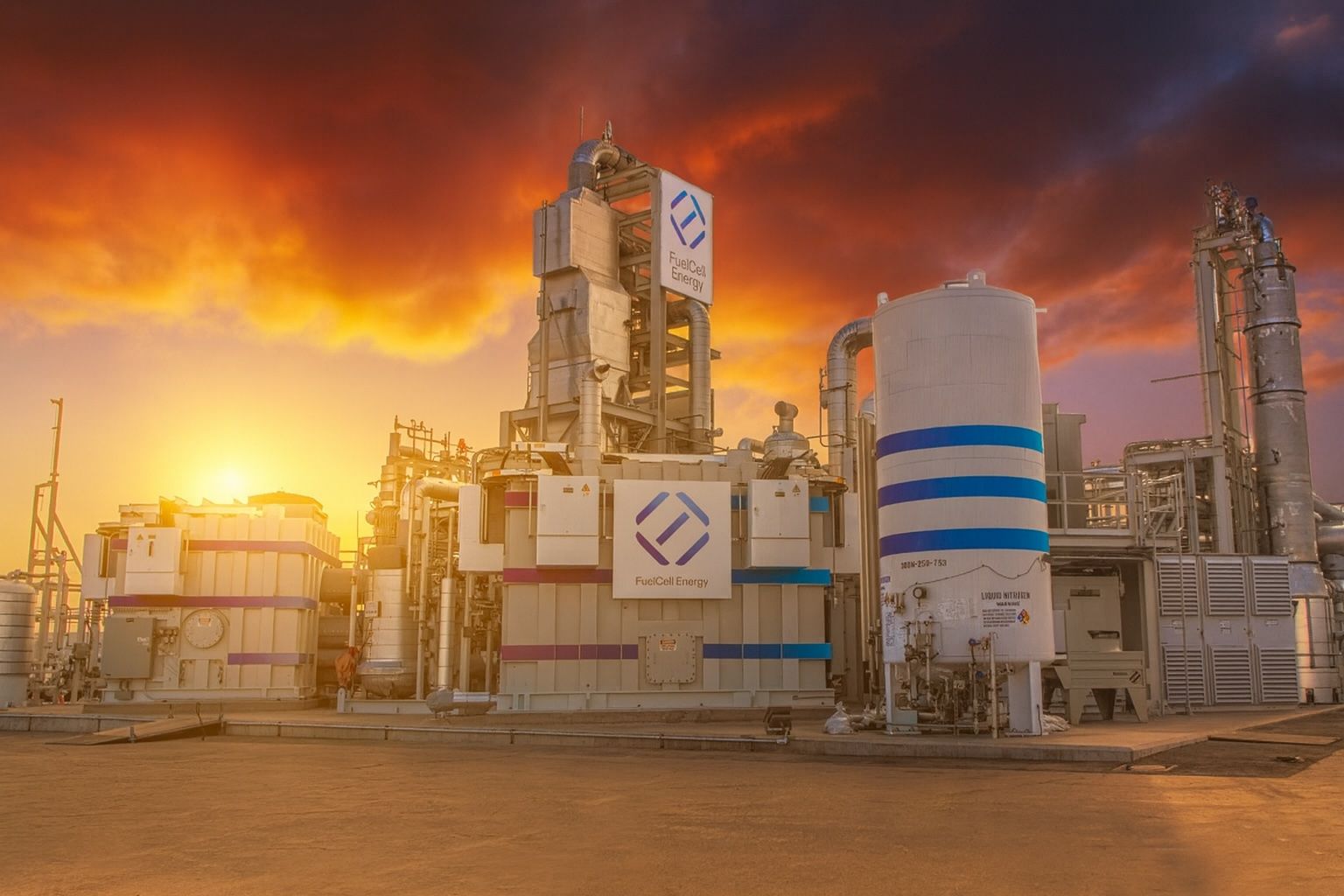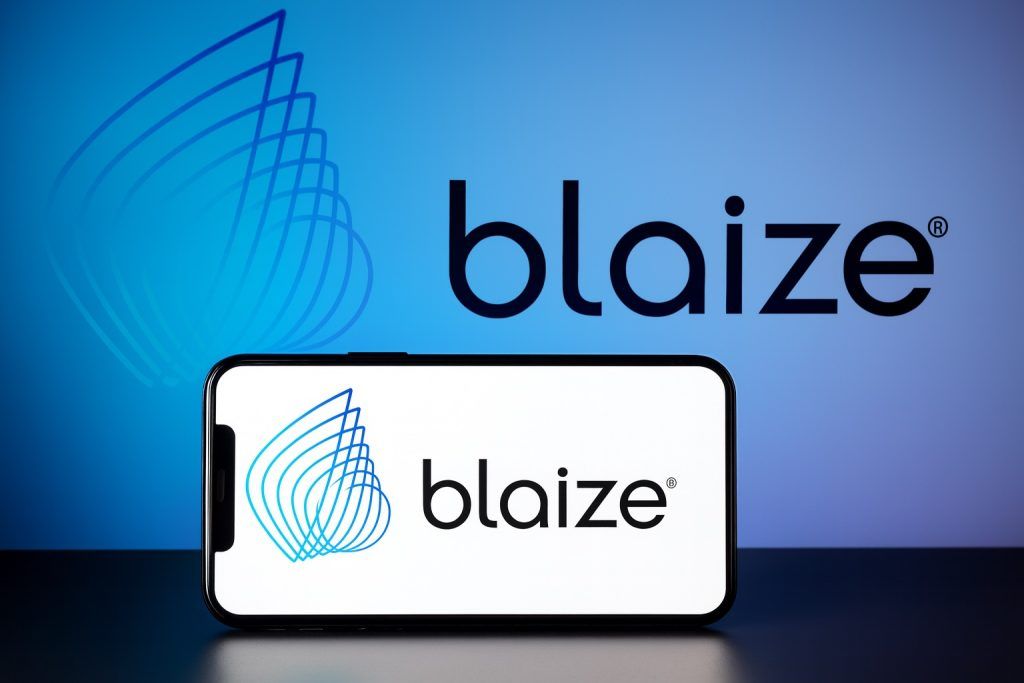- Soaring Share Price: FuelCell Energy (NASDAQ: FCEL) has seen its stock price surge roughly 150% in the past month, recently trading around $11–$12 per share [1] [2]. The rally accelerated this week as shares jumped ~8% on Oct. 13 after competitor Bloom Energy announced a $5 billion AI data-center partnership with Brookfield Asset Management [3].
- Latest Earnings – Rapid Growth, Larger Loss:Fiscal Q3 2025 revenue leapt 97% year-over-year to $46.7 million [4], driven by strong product sales (notably in South Korea). Backlog expanded to $1.24 billion for future orders [5]. However, heavy charges pushed the net loss to $92.5 million (widened from a $33.5M loss a year ago) [6]. One-off restructuring and impairment costs led to a –$3.78 EPS for the quarter, though on an adjusted basis the loss per share improved to –$0.95 from –$1.74 the prior year [7].
- Restructuring & Focus on AI Power Demand: In mid-2025 FuelCell undertook a global restructuring aimed at cutting operating costs by ~15% in fiscal 2025 [8]. The company refocused on its core molten-carbonate fuel cell technology to provide distributed power generation and grid-independent energy solutions, targeting booming demand from data centers and AI “factory” infrastructure [9] [10]. CEO Jason Few said surging power needs from data centers with high-density AI chips create opportunities that FuelCell’s modular fuel cell systems are “uniquely positioned” to meet [11]. The June reorganization – including a 17% workforce reduction – is already lowering costs and sharpening the company’s focus on its strengths, according to management [12].
- Sector Tailwinds – Big Deals and Policy Boosts: The fuel cell and hydrogen energy sector is heating up amid the AI boom and clean energy push. Rival Bloom Energy’s stock soared ~25–30% in recent days after Brookfield’s multibillion-dollar investment to deploy Bloom’s fuel cells in AI data centers [13] [14]. Plug Power has also spiked – up 170%+ in early October – after a bullish analyst upgrade and signs of rising electricity costs driving interest in green hydrogen [15]. Meanwhile, U.S. policy support has improved: a new energy bill extended a 30% Investment Tax Credit for fuel cell projects through 2032 and extended clean hydrogen production credits to 2028, bolstering the economics for FuelCell’s power and hydrogen projects [16].
- Analyst Sentiment & Outlook: Despite the rally, Wall Street remains cautious on FuelCell. The stock carries a “Hold” consensus rating and the average 12-month price target is about $8–$9, implying ~20% downside from current levels [17] [18]. No analysts rate FCEL a outright “Buy” at the moment (out of 7 coverage analysts, 5 hold/neutral, 2 sell) [19]. However, some targets were recently raised: for example, UBS upped its target to $7.25 (from ~$5 previously) as the company’s AI-related potential improves [20]. Short interest in the stock has eased – now around 7% of the float, down ~18% from last month – indicating improving investor sentiment and some shorts covering their positions [21] [22].
FuelCell Rides AI-Fueled Market Momentum
Shares of FuelCell Energy have been on a tear in recent weeks, riding a wave of optimism about clean energy’s role in powering artificial intelligence infrastructure. The stock is up over 150% in the past month and recently hit multi-month highs around the $11–12 level [23] [24]. On Wednesday (Oct. 15), FCEL traded roughly 26% below its 52-week peak of ~$14 [25], after more than doubling from late summer lows.
This spike in market value has been driven by a series of catalysts. In early October, an analyst at H.C. Wainwright more than doubled the price target for industry peer Plug Power – from $3 to $7 – citing booming data-center electricity demand and improved hydrogen economics. Although FuelCell was not mentioned directly in that bullish note, enthusiasm spilled over to the whole hydrogen/fuel-cell space [26]. FuelCell’s stock jumped 16% on Oct. 3 alone in sympathy, a move one market observer said was unusually large even for this volatile stock [27] [28]. Traders noted that FuelCell shares have had nearly 90 days of 5%+ swings in the past year, but such double-digit surges are relatively rare, underscoring the significance of the sector news [29].
The rally gathered further steam this week after Bloom Energy (BE) – a larger fuel cell player – unveiled a landmark partnership with Brookfield Asset Management to invest up to $5 billion in deploying fuel cell systems for “AI factories” (data centers) [30]. That announcement on Oct. 13 sent Bloom’s stock rocketing ~24–30% to record highs around $108 [31]. It also provided a halo boost to smaller peers: FuelCell Energy’s shares spiked about 7–8% by midday Oct. 13 on the news [32], and Ballard Power (a Canadian fuel-cell firm) popped ~23% in the same session [33]. The market clearly interpreted Brookfield’s massive bet as validation of fuel cell technology’s growing role in powering AI and cloud computing infrastructure, a narrative that has driven year-to-date gains of nearly 700% for Bloom Energy stock [34].
It hasn’t been only hype moving FuelCell’s stock. Investors are also encouraged by concrete improvements in the company’s financial performance and execution. FuelCell’s own quarterly results (released Sept. 9) showed the business delivering its strongest revenue growth in years [35]. And management’s commentary has struck an optimistic tone about emerging opportunities in distributed generation for data centers. All of this comes amid a backdrop of improving policy support for clean energy. Under a bipartisan energy bill passed in the U.S., fuel-cell power projects now qualify for a 30% Investment Tax Credit through 2032, and producers of clean hydrogen can earn tax credits through 2028 [36] – tailwinds that could stimulate additional project investment in FuelCell’s arena.
Revenue Doubles as Backlog Builds, But Losses Persist
FuelCell Energy’s latest earnings report highlighted a mix of rapid top-line growth and ongoing bottom-line challenges. For the third quarter of fiscal 2025 (May–July), the company’s revenue nearly doubled to $46.7 million from $23.7M a year earlier [37]. This 97% surge was powered by higher product sales, including delivering new fuel cell modules to a key utility customer in South Korea. It marks the second consecutive quarter of strong growth (Q2 revenue was up 67% YoY) as FuelCell works through a large project backlog.
That backlog stands at $1.24 billion as of Q3, up from $1.20B last year [38]. The backlog mainly consists of long-term utility power purchase agreements, service contracts, and equipment orders – providing multi-year revenue visibility. Notably, in late July the company secured a new 10-MW repowering agreement with South Korea’s CGN Yulchon power plant, where FuelCell will supply eight new carbonate fuel cell modules and seven years of maintenance services [39] [40]. This deal added to backlog and “further solidified [FuelCell’s] leadership” in the Asian utility market, management said [41]. FuelCell has operated over 100 MW of fuel cell parks in Korea through partnerships, and the CGN project aligns with South Korea’s Hydrogen Economy Roadmap to decarbonize power generation [42] [43].
Despite the sales gains, FuelCell remains unprofitable, and its losses deepened in the short term due to restructuring costs. The Q3 gross loss narrowed slightly to $5.1 million from $6.2M a year ago [44], reflecting improved project margins. However, operating expenses swelled with one-time charges, leading to a quarterly operating loss of $95.4 million [45]. Net loss attributable to common stockholders was $92.5 million for Q3 [46], almost triple the $33.5M loss in Q3 2024. This ballooning loss was driven by roughly $80+ million in special charges, including impairment of certain legacy projects and costs from the global restructuring that the company initiated over the summer [47]. On a per-share basis, the GAAP net loss was –$3.78 (vs. –$1.99 a year prior) [48].
Stripping out those one-time items, FuelCell reported an adjusted loss of –$0.95 per share, which is actually an improvement from the –$1.74 adjusted EPS a year ago [49]. In other words, excluding the big write-offs, the underlying quarterly loss narrowed by about 45% year-over-year [50]. This suggests that the core business is slowly moving toward better cost efficiency. Indeed, adjusted EBITDA for the quarter was –$16.4 million, an improvement from –$20.1M a year ago (a 19% improvement) [51].
FuelCell ended the quarter with over $315 million in cash and short-term investments (as of July 31, 2025, per its filings), thanks in part to equity raises in prior periods. This liquidity is important as the company continues to fund operations and invest in product development. However, investors should note that further capital raises may eventually be needed if losses continue – a common concern for development-stage clean tech firms.
On the earnings call, management emphasized that cost-reduction efforts are bearing fruit and that they remain focused on reaching breakeven profitability in coming years. They highlighted improved performance in the core generation segment, where operating costs have been trimmed, and pointed to the adjusted gross margin turning positive in Q3 after a string of negative-margin quarters [52] [53]. Still, with annual R&D and overhead in the tens of millions, FuelCell will need continued revenue growth (and possibly additional partnerships) to achieve sustained profitability. The company’s fiscal year ends in October, and analysts expect full-year 2025 revenues around $130–$135 million with a sizable net loss, followed by further revenue growth to ~$200M in 2026 (according to consensus forecasts).
Pivoting Strategy: “Distributed Power” for Data Centers and Clean Hydrogen
Underlying FuelCell Energy’s recent moves is a strategic pivot toward applications seeing the highest demand – notably distributed power for data centers, grid resiliency, and clean hydrogen projects. In late 2024, the company’s leadership recognized that large-scale centralized projects were materializing slower than hoped (due to lengthy permitting, policy uncertainty, and high capital requirements) [54] [55]. In response, FuelCell announced a sweeping plan in November 2024 to “right-size” the organization and double down on its most commercially ready technology: its Connecticut-made molten carbonate fuel cell platforms [56].
This global restructuring, finalized by mid-2025, reduced headcount by about 17% and cut spending on non-core development, targeting a 15% cut in operating costs for FY2025 [57]. The company shifted resources toward deploying SureSource carbonate fuel cell systems for on-site power generation and microgrids, which can be installed faster and operate independently of the utility grid. Management noted that delays in big centralized renewable projects (often due to transmission bottlenecks and permitting) have opened an opportunity for “distributed energy platforms” that don’t face those hurdles [58]. “Power shortages in grids, high-voltage transmission needs, and delays in centralized projects… our distributed energy platforms do not experience [these delays],” CEO Jason Few said, highlighting the resiliency advantage of on-site fuel cell power plants [59].
A key focus area is providing reliable, efficient power for data centers, whose energy demand is surging with the growth of AI and cloud computing. FuelCell’s carbonate fuel cells can run on natural gas or hydrogen to produce 24/7 baseload electricity with lower carbon emissions, and they can be located on a customer’s premises. “We are particularly encouraged by the opportunities created by surging power demand from data centers… Our modular power block solutions are uniquely positioned to scale with this demand and provide the reliability and flexibility these customers require,” CEO Few commented in the Q3 report [60]. The company is actively marketing these solutions as an antidote to data-center power challenges, touting them as “friction-free power” that avoids grid congestion and long interconnection waits [61] [62].
FuelCell has already deployed some systems in this arena. Executives noted the company “has established multi-megawatt projects with data center partners in the U.S. and Korea” [63]. While details are limited (likely due to customer confidentiality), this suggests FuelCell is working with tech or colocation firms to pilot on-site fuel cell power. Such projects not only provide backup or primary power to data centers but can also use the fuel cells’ byproduct heat for cooling or other purposes, enhancing efficiency.
Beyond data centers, the company continues to pursue its longer-term innovations in solid oxide fuel cells and electrolyzers for hydrogen. FuelCell’s solid oxide platform can operate in two modes: generating power or producing hydrogen via electrolysis. A major milestone is expected in 2025 at Idaho National Laboratory, where FuelCell will demonstrate a multi-module solid oxide electrolysis system [64]. Success there could open doors to partnerships for gigawatt-scale hydrogen projects, an area where management sees growing demand (especially with new federal incentives). In the meantime, FuelCell is collaborating with ExxonMobil on carbon capture using fuel cells – notably a pilot in Rotterdam that will use FuelCell’s carbonate units to capture CO₂ from industrial exhaust while generating power [65]. These development efforts aim to position the company for future revenue streams in carbon capture and hydrogen production, complementing its power generation business.
The overarching goal of FuelCell’s strategic refocus is to drive topline growth with commercially ready products (like its 2.5 MW SureSource plants) while trimming expenses, so that the company can eventually achieve profitability after years of losses. “Go-forward strategy will emphasize topline revenue growth and future profitability,” the company stated in its restructuring announcement [66]. Early signs show progress: product sales are climbing, and adjusted losses are shrinking. Still, FuelCell’s leadership acknowledges that the “energy transition is not linear” and requires flexibility [67]. By concentrating on near-term opportunities (data centers, distributed generation) without abandoning long-term tech (electrolyzers, carbon capture), FuelCell is attempting to balance the immediate and future needs of the clean energy market.
Competitive Landscape: Green Power Players Jockey for Position
FuelCell Energy operates in a crowded clean energy arena, competing with other fuel cell makers and hydrogen technology firms, as well as with more established solutions like solar, wind, and battery storage for certain use cases. Its two closest U.S.-listed peers are Bloom Energy (NYSE: BE) and Plug Power (NASDAQ: PLUG) – and all three have benefited from the recent investor fervor around clean power for AI applications.
Bloom Energy, in particular, has been a stock market star in 2025. Bloom’s solid-oxide fuel cell systems (which provide on-site power primarily to commercial and industrial clients) have gained traction, especially after the company struck major data center deals with firms like Oracle, Equinix, and American Electric Power earlier in the year [68]. Even before the Brookfield announcement, Bloom’s revenue was on track for ~$1.8 billion in 2025 (Q2 revenue was $401M, +19.5% YoY [69]) and it had achieved six consecutive quarters of non-GAAP operating profit in its services segment [70]. That operational progress, combined with the AI buzz, saw Bloom’s stock climb nearly 700% over the last 12 months [71]. By mid-October, Bloom’s market cap exceeded $20 billion, dwarfing FuelCell’s roughly $400 million valuation [72] [73]. The Brookfield deal – up to $5B to finance Bloom fuel cells for new AI data centers – further cements Bloom as a front-runner in marrying clean energy with tech infrastructure.
Plug Power, on the other hand, is known more for hydrogen production (electrolyzers) and fuel-cell forklifts. Plug’s stock had struggled earlier in 2025, but it staged a spectacular comeback in late September and early October. A key spark was an extremely bullish call from an analyst at H.C. Wainwright, who on Oct. 3 not only reiterated a Buy but raised Plug’s target price from $3 to $7 – the highest on Wall Street [74] [75]. This upgrade, along with signs of improving gross margins at Plug and soaring power prices that make green hydrogen more competitive, ignited a feeding frenzy among investors [76] [77]. PLUG shares rocketed +35% in a single day (Oct. 3) and kept climbing, aided by a short squeeze (about 40% of Plug’s float had been sold short) [78]. Over a three-month span, Plug Power’s stock price more than tripled (+170%) [79]. This rally even lifted other fuel-cell names like Ballard Power (NASDAQ: BLDP), which jumped ~23% in early October trading [80]. The exuberance reflects investors betting that hydrogen and fuel cells are finally turning a corner toward broader adoption, especially as heavy industry and data centers hunt for cleaner energy solutions.
However, industry experts urge some caution. None of the pure-play fuel cell companies are net profitable yet, and they all face execution risks. Jefferies analysts sounded a note of skepticism in late September, when they downgraded Bloom Energy to Underperform (and reportedly had a cautious view on FuelCell as well), arguing that Bloom’s valuation had run far ahead of its fundamentals and warning of “limited visibility” into post-2026 growth [81] [82]. That report triggered a double-digit drop in Bloom’s stock (~–12%) and a ~9% slide in FuelCell’s stock in late September [83]. Likewise, while Plug Power’s trajectory has improved, most analysts still rate Plug a Hold and the average Plug price target (~$2.20) sits well below its current trading price – a reminder of the disconnect between recent market euphoria and Wall Street’s longer-term tempered expectations [84] [85].
For FuelCell Energy, the competitive takeaway is that it must demonstrate tangible progress (e.g. converting backlog to revenue, improving margins, securing new marquee customers) to justify its recent stock surge. The company’s market cap is a fraction of Bloom’s or Plug’s, which could imply upside if FuelCell closes the gap – or it could reflect investor concerns about FuelCell’s steeper climb to profitability. One advantage FuelCell often points to is its versatile fuel flexibility (the ability to use biogas, natural gas, or hydrogen as fuel) and the unique capability of its carbonate fuel cells to capture CO₂ while generating power (a feature of interest to partners like Exxon for carbon capture use-cases) [86]. If FuelCell can leverage these strengths in niche markets (e.g. waste-to-energy projects, carbon capture at industrial sites, etc.) while riding the broader wave of data center demand, it could carve out a profitable niche alongside its larger peers.
Looking Ahead: Cautious Optimism as Market Watches Execution
Investors are clearly betting that FuelCell Energy’s pivot and the industry’s momentum can translate into a turnaround for the long-struggling company. Year-to-date, FCEL shares are now up over 25% (as of mid-October) after spending much of the year in the red [87]. The recent rally has given loyal shareholders a rare bout of optimism – though it’s worth noting that even at ~$11 per share, the stock remains well below its levels of a few years ago. (FuelCell executed a 1-for-20 reverse stock split in late 2024, and long-term holders have seen significant dilution; a $1,000 investment five years ago would be worth only about $130 today, per one analysis [88].)
Going forward, several catalysts and markers will indicate whether FuelCell’s current momentum is sustainable:
- Project Deployments and Deals: The company’s ability to actually deploy the big backlog of projects on time and on budget will be critical. Watch for progress on the South Korean utility projects (e.g. the CGN repowering slated for 2026) and any new project wins. A partnership or pilot with a major U.S. tech firm for data center power, for instance, could be a game-changer. Conversely, delays or cancellations of expected projects would undermine the growth narrative.
- Financial Trajectory: In the next earnings (Q4 FY2025, likely in December), investors will look for continued revenue growth and, ideally, a further reduction in adjusted losses. Improving gross margins and stabilizing operating expenses (post-restructuring) would signal that FuelCell is moving toward breakeven. Analysts currently forecast a moderating loss in fiscal 2026 (around –$5.73 EPS vs –$6+ in 2025) [89], but any guidance from management on reaching EBITDA-positive or cash-flow breakeven will be closely read.
- Capital Needs: With over $300M in cash, FuelCell is not in immediate peril, but if the company plans to scale up manufacturing or take on larger projects (like gigawatt-scale electrolyzers), it may require either strategic partnerships or additional funding. Investors will monitor whether FuelCell can finance growth internally or might issue new equity or debt. The recent stock price strength could provide an opportunity for the company to raise capital more favorably if needed, though that could dilute shareholders.
- Industry Developments: The macro environment remains crucial. Further policy support (or lack thereof) for hydrogen and fuel cells will influence the sector. Likewise, if interest rates remain high, the cost of financing projects could be a headwind for FuelCell’s customers. Competition also isn’t standing still – for example, Bloom Energy is pushing into hydrogen fuel production and international markets, and Plug Power aims to achieve positive gross margins by Q4 2025 and ramp its green hydrogen output [90] [91]. FuelCell will need to execute adeptly to keep up. On the positive side, any new government contracts or clean energy incentives (such as hydrogen hub funding or Department of Energy grants) could benefit FuelCell.
Market experts have mixed views on FuelCell’s long-term prospects. Optimists argue that the company is positioned in the right market at the right time – with data centers, utilities, and industrial firms all seeking cleaner, more reliable power solutions, FuelCell’s decades of experience and patented technology could finally pay off. They point to the company’s price-to-book ratio around 0.3 (the stock trades at a steep discount to the book value of its assets) as a sign of undervaluation if business prospects brighten [92]. Pessimists, on the other hand, note that FuelCell has a 20+ year history of shareholder value destruction and recurring losses. They underscore that even now, after the recent pop, Wall Street’s consensus target (~$8.78) sits well below the trading price [93] [94], reflecting concerns that the stock has run ahead of fundamentals.
For now, FuelCell Energy has the market’s attention – something it hasn’t enjoyed in quite a while. The stock’s inclusion in Google News and Discover feeds is indicative of broader public interest in hydrogen and fuel cell names. Continued news flow will be key: investors will be watching for follow-through on the AI/data center theme, any new partnerships or contracts announced via press releases, and the tone of commentary from industry analysts. As one analyst quipped recently, in the short term “the hype around the AI-energy nexus” is fueling these stocks [95] – but in the long term, companies like FuelCell will have to deliver tangible results to maintain their newfound momentum.
Bottom Line: FuelCell Energy is riding high on a confluence of favorable trends – explosive demand for clean, distributed power (thanks to AI), improving financial metrics, and supportive policies. Its stock has responded with a dramatic rally. The coming quarters will test whether this is the start of a genuine turnaround for FuelCell or a temporary spike in a volatile story. For investors and industry watchers, 2025 is shaping up as a pivotal year for FuelCell Energy’s journey toward sustainable growth in the burgeoning hydrogen economy.
Sources: Official company press releases [96] [97]; Yahoo Finance/StockStory news [98] [99]; Globe Newswire via Yahoo [100]; FuelCellsWorks [101]; Reuters and Bloomberg data [102] [103]; TS2 Tech market analysis [104] [105]; MarketBeat consensus and financial metrics [106] [107]; Benzinga/analyst commentary [108] [109].
References
1. www.benzinga.com, 2. www.benzinga.com, 3. markets.financialcontent.com, 4. investor.fce.com, 5. investor.fce.com, 6. investor.fce.com, 7. investor.fce.com, 8. investor.fce.com, 9. investor.fce.com, 10. investor.fce.com, 11. investor.fce.com, 12. investor.fce.com, 13. ts2.tech, 14. ts2.tech, 15. ts2.tech, 16. ts2.tech, 17. www.marketbeat.com, 18. www.marketbeat.com, 19. www.marketbeat.com, 20. www.benzinga.com, 21. www.marketbeat.com, 22. www.marketbeat.com, 23. www.benzinga.com, 24. www.benzinga.com, 25. stockstory.org, 26. stockstory.org, 27. stockstory.org, 28. stockstory.org, 29. stockstory.org, 30. ts2.tech, 31. www.reuters.com, 32. markets.financialcontent.com, 33. ts2.tech, 34. ts2.tech, 35. investor.fce.com, 36. ts2.tech, 37. investor.fce.com, 38. investor.fce.com, 39. investor.fce.com, 40. investor.fce.com, 41. investor.fce.com, 42. investor.fce.com, 43. investor.fce.com, 44. investor.fce.com, 45. investor.fce.com, 46. investor.fce.com, 47. investor.fce.com, 48. investor.fce.com, 49. investor.fce.com, 50. investor.fce.com, 51. investor.fce.com, 52. investor.fce.com, 53. investor.fce.com, 54. investor.fce.com, 55. investor.fce.com, 56. investor.fce.com, 57. investor.fce.com, 58. investor.fce.com, 59. investor.fce.com, 60. investor.fce.com, 61. investor.fce.com, 62. investor.fce.com, 63. www.benzinga.com, 64. investor.fce.com, 65. investor.fce.com, 66. investor.fce.com, 67. investor.fce.com, 68. ts2.tech, 69. ts2.tech, 70. ts2.tech, 71. ts2.tech, 72. ts2.tech, 73. www.marketbeat.com, 74. ts2.tech, 75. finance.yahoo.com, 76. ts2.tech, 77. ts2.tech, 78. ts2.tech, 79. ts2.tech, 80. ts2.tech, 81. www.gurufocus.com, 82. ts2.tech, 83. ts2.tech, 84. ts2.tech, 85. ts2.tech, 86. investor.fce.com, 87. markets.financialcontent.com, 88. markets.financialcontent.com, 89. www.marketbeat.com, 90. ts2.tech, 91. ts2.tech, 92. www.marketbeat.com, 93. www.marketbeat.com, 94. www.marketbeat.com, 95. ts2.tech, 96. investor.fce.com, 97. investor.fce.com, 98. markets.financialcontent.com, 99. stockstory.org, 100. markets.financialcontent.com, 101. investor.fce.com, 102. www.reuters.com, 103. ts2.tech, 104. ts2.tech, 105. ts2.tech, 106. www.marketbeat.com, 107. www.marketbeat.com, 108. www.benzinga.com, 109. www.benzinga.com







